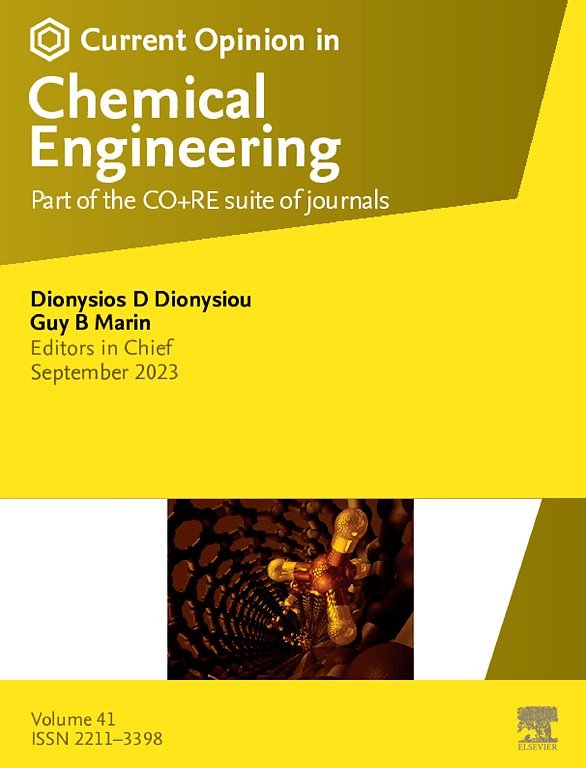Intensified cavitation process for the pretreatment of microalgae: a mini review
IF 6.8
2区 工程技术
Q1 BIOTECHNOLOGY & APPLIED MICROBIOLOGY
引用次数: 0
Abstract
Advancement of microalgae pretreatment is shifting toward scalable and cost-effective methodologies to exploit the composition of microalgae biomass. The phenomenon of cavitation demonstrates its potential in industrial processes and is now being harnessed as a pretreatment strategy in microalgae biorefinery. Cavitation techniques through ultrasonication and hydrodynamic cavitation have proven its potential at generating cavities whose implosions create shear stress capable of disrupting microalgae cell walls that increase the yield of bioactive compounds in microalgae biomass. Although this technology shows promising results in the bioprocess of microalgae biomass, the leap to commercialization is fraught with the cost-intensive process. Intensive processes involving optimizing energy efficiency, controlled cavitation, scaling-up technology, and ensuring high quality of extracted compounds remain key areas for further research. Resolving these issues is vital for integrating cavitation into microalgae biorefinery and unlocking various bioproduct development. This review aims to offer insight into the practical application of cavitation in microalgae biomass valorization. As research advances, the potential of cavitation applications will determine its viability as a sustainable industry-standard process.
强化空化工艺预处理微藻的研究进展
微藻预处理的进展正在转向可扩展和经济有效的方法来开发微藻生物量的组成。空化现象显示了其在工业过程中的潜力,目前正在微藻生物炼制中作为预处理策略加以利用。超声空化技术和流体动力空化技术已经证明了其产生空腔的潜力,这些空腔的内爆产生剪切应力,能够破坏微藻细胞壁,从而增加微藻生物量中生物活性化合物的产量。虽然这项技术在微藻生物质的生物过程中显示出有希望的结果,但向商业化的飞跃充满了成本密集型的过程。包括优化能源效率、控制空化、扩大技术规模和确保提取化合物的高质量在内的密集过程仍然是进一步研究的关键领域。解决这些问题对于将空化技术融入微藻生物炼制中,解锁各种生物产品的开发至关重要。本文综述了空化技术在微藻生物量增值中的实际应用。随着研究的进展,空化应用的潜力将决定其作为可持续工业标准工艺的可行性。
本文章由计算机程序翻译,如有差异,请以英文原文为准。
求助全文
约1分钟内获得全文
求助全文
来源期刊

Current Opinion in Chemical Engineering
BIOTECHNOLOGY & APPLIED MICROBIOLOGYENGINE-ENGINEERING, CHEMICAL
CiteScore
12.80
自引率
3.00%
发文量
114
期刊介绍:
Current Opinion in Chemical Engineering is devoted to bringing forth short and focused review articles written by experts on current advances in different areas of chemical engineering. Only invited review articles will be published.
The goals of each review article in Current Opinion in Chemical Engineering are:
1. To acquaint the reader/researcher with the most important recent papers in the given topic.
2. To provide the reader with the views/opinions of the expert in each topic.
The reviews are short (about 2500 words or 5-10 printed pages with figures) and serve as an invaluable source of information for researchers, teachers, professionals and students. The reviews also aim to stimulate exchange of ideas among experts.
Themed sections:
Each review will focus on particular aspects of one of the following themed sections of chemical engineering:
1. Nanotechnology
2. Energy and environmental engineering
3. Biotechnology and bioprocess engineering
4. Biological engineering (covering tissue engineering, regenerative medicine, drug delivery)
5. Separation engineering (covering membrane technologies, adsorbents, desalination, distillation etc.)
6. Materials engineering (covering biomaterials, inorganic especially ceramic materials, nanostructured materials).
7. Process systems engineering
8. Reaction engineering and catalysis.
 求助内容:
求助内容: 应助结果提醒方式:
应助结果提醒方式:


